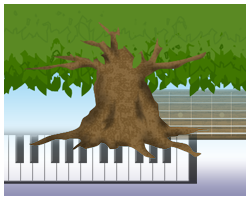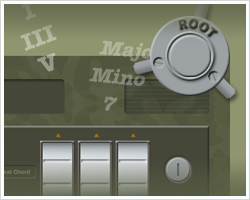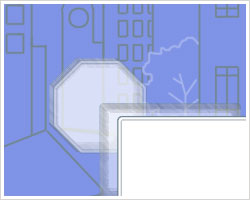Most of the chords you hear in popular music are in root position, meaning that the root tone of the chord is also the lowest tone in the chord. When a note other than the root appears in the lowest position ("bass position") the chord is called an inverted chord.
If you take a typical C Major chord (chord tones C, E, G) and raise the root tone C up an octave, your lowest tone becomes E, and the chord is said to be in first inversion, because the 3rd of the chord (E) is in the bass position. Inverted chords are often written with a slash "/" followed by the name of the tone that is in the bass.
Using our previous example, we would call this first inversion chord C/E. This simply indicates that it is a C Major chord with E as the lowest tone. In the same way, if the 5th of the chord appears in the bass position, the chord is said to be in second inversion. So a C Major chord in second inversion would have G as its lowest tone, and we would notate the chord as C/G.
In the intermediate and advanced levels of Tone Trees and Chord Locks, you will work with all kinds of inversions. With Tone Trees, you will also learn to visualize the shapes of different inverted chords on piano or guitar.



